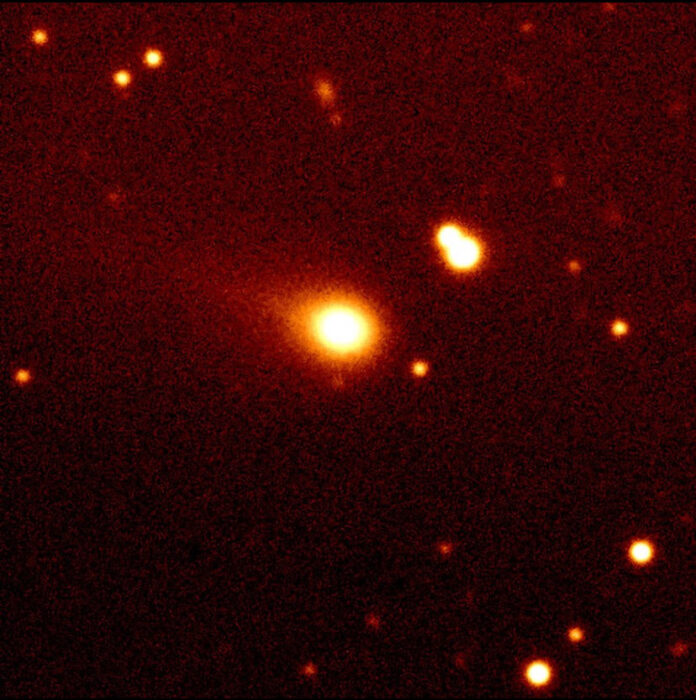
What Matters Now
- A constellation of classified defense satellites, part of SpaceX’s secretiveStarshieldprogram, is transmitting downlinks on radio bands reserved for uplinks — a move that potentially violates international radio norms established by the United Nations’ International Telecommunication Union (ITU). The unusual transmissions were first detected by Canadian amateur satellite tracker Scott Tilley, not by a government agency or corporate insider.
- These mysterious transmissions are occurring at a critical moment. Astronomers worldwide are calibrating their telescopes to capture the interstellar object3I/ATLASas it re-emerges from behind the Sun in early December. Experts now fear that the Starshield network’s activity could interfere with sensitive scientific instruments designed to detect faint signals from deep space.
- Neither Elon Musk nor the U.S. government has publicly commented on the matter. NPR’s October 17 report confirmed that signals from Starshield satellites are being received on frequencies between 2025 and 2110 MHz, a spectrum legally reserved for Earth-to-space communications. The secrecy surrounding these downlinks and the timing of their discovery have sparked debate over national security, scientific transparency, and regulatory oversight.
By Samuel A. Lopez | USA Herald | October 20, 2025
WASHINGTON, DC – The Starshield network, operated under contract with the National Reconnaissance Office (NRO), is a classified version of SpaceX’s Starlink satellites. It reportedly serves both Earth-observation and communications missions, forming part of what the NRO describes as a “proliferated system” designed to increase resilience and timeliness of data delivery. Since mid-2024, eleven launches have placed more than 170 of these satellites into orbit.
The revelation of their unusual transmissions began not in a control center, but in the backyard of Scott Tilley, an amateur satellite tracker in British Columbia. He was scanning radio frequencies when, by accident, he stumbled upon signals descending from space in a range where none should exist. “It was just a clumsy move at the keyboard,” Tilley told NPR. “All of a sudden I’m looking at the wrong antenna, the wrong band… I hit the record button and let it run.”
The range in question — between 2025 and 2110 MHz — is reserved for uplink transmissions, meaning data should be sent to satellites, not from them. When Tilley compared his recordings to a global satellite tracking database, one identifier jumped out: “Starshield.”
The discovery couldn’t come at a worse time for astronomers. In late October, the interstellar object known as 3I/ATLAS will reach its closest point to the Sun before reappearing for Earth-based observation in November and December. It is only the third known visitor from another star system to pass through ours, and scientists are racing to gather data that could reveal its origin, composition, and velocity.
To prepare, observatories worldwide are aligning and calibrating their telescopes to detect faint reflections, ion emissions, and outgassing signatures. These observations depend on radio-quiet skies. Even minor interference from orbiting satellites can raise the noise floor, masking the extremely faint data astronomers are trying to capture.
Starshield’s emissions, if confirmed in the same spectrum windows used for telescope calibration or tracking, could degrade that data. The concern is not hypothetical: in the past decade, radio interference from satellite networks has repeatedly forced astronomers to discard or delay critical observations. Should this occur during the brief re-emergence of 3I/ATLAS, the scientific community could lose an irreplaceable opportunity.


